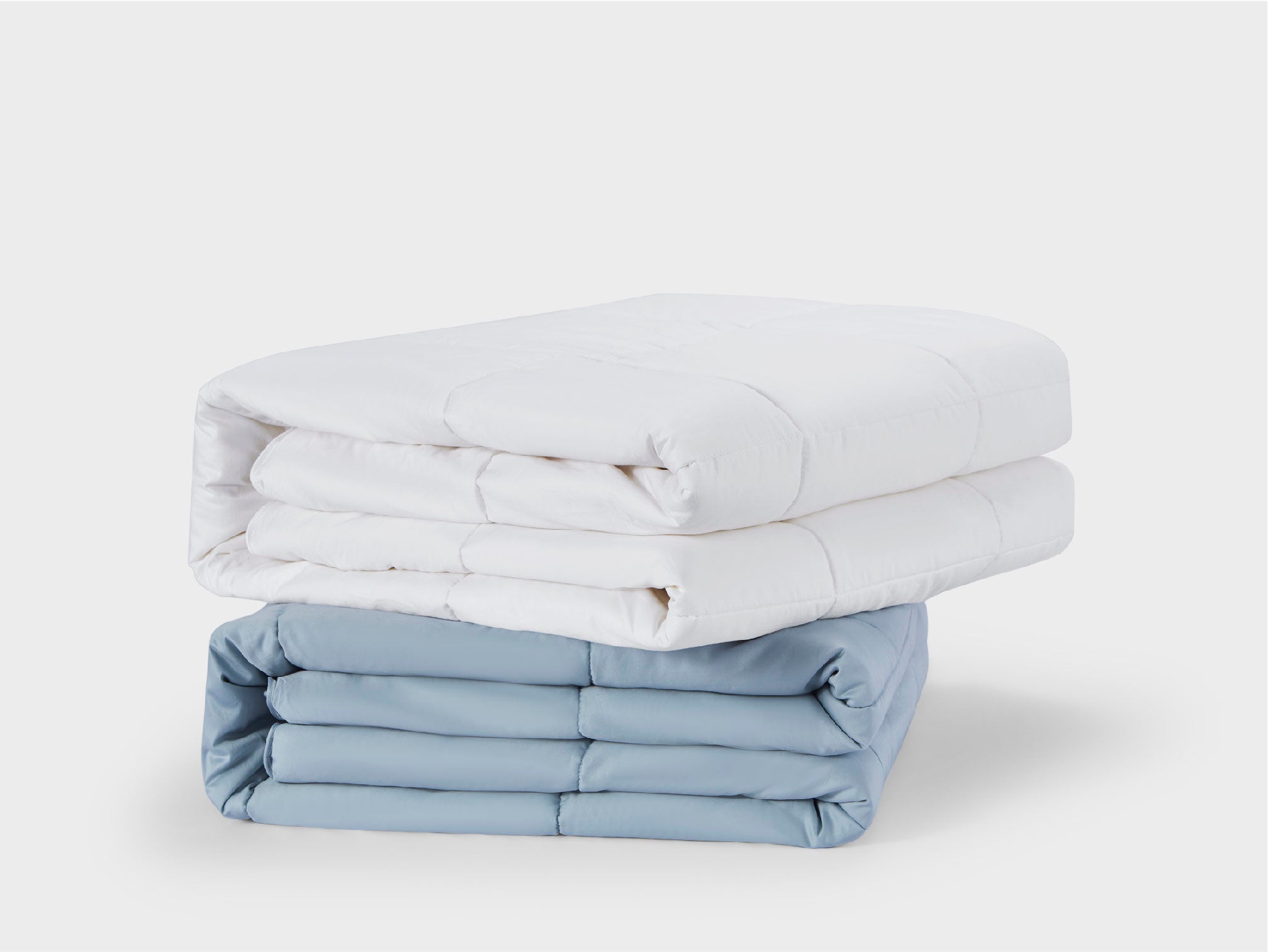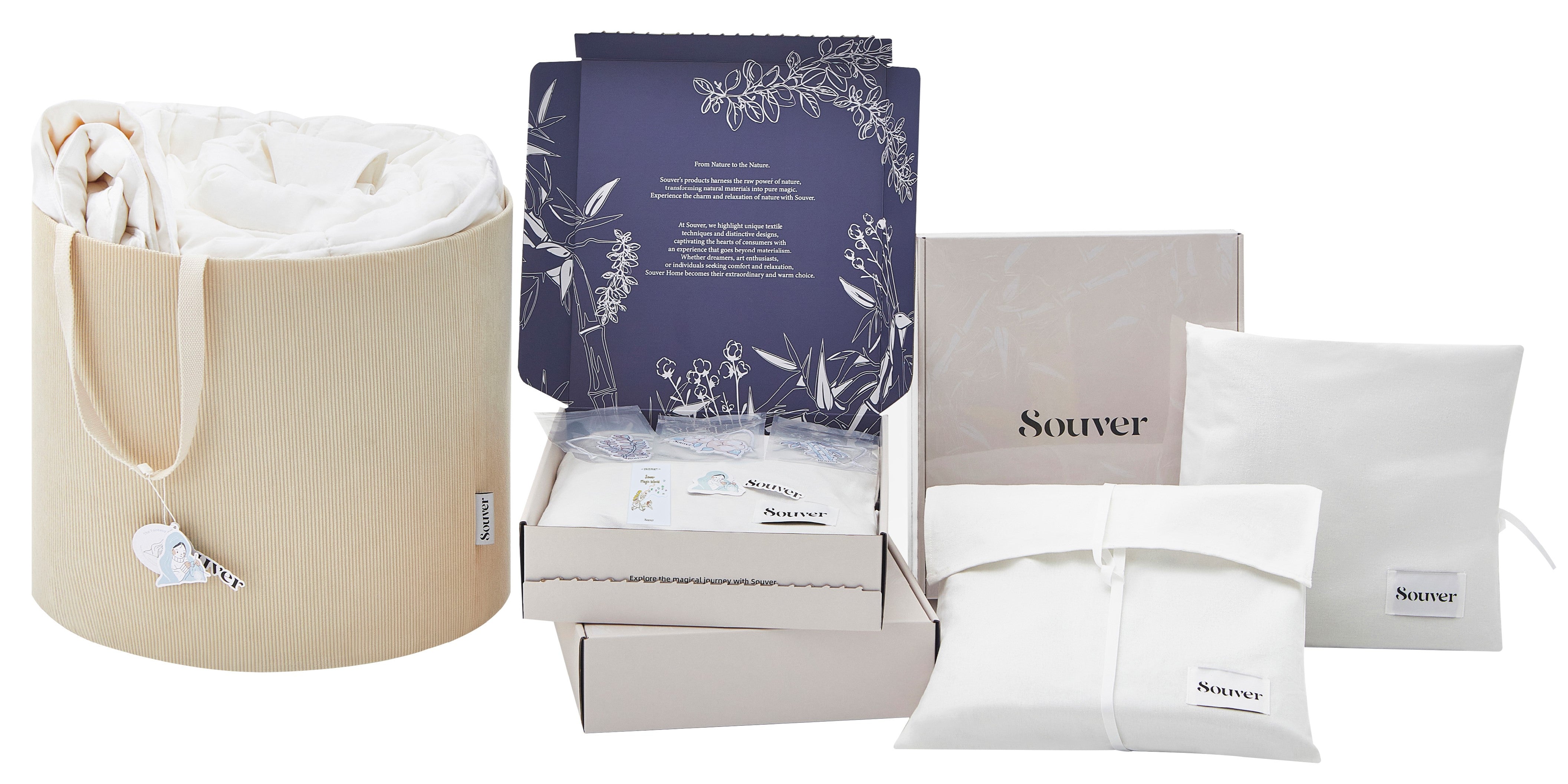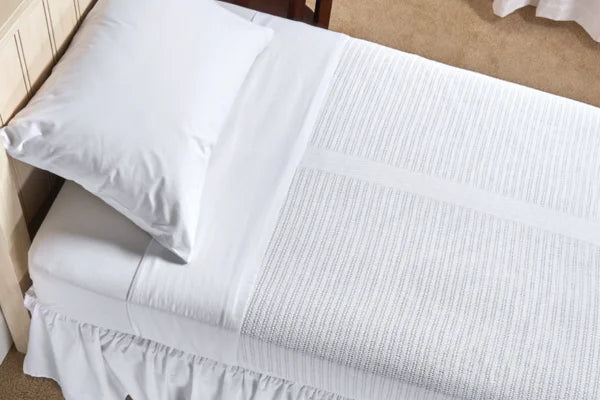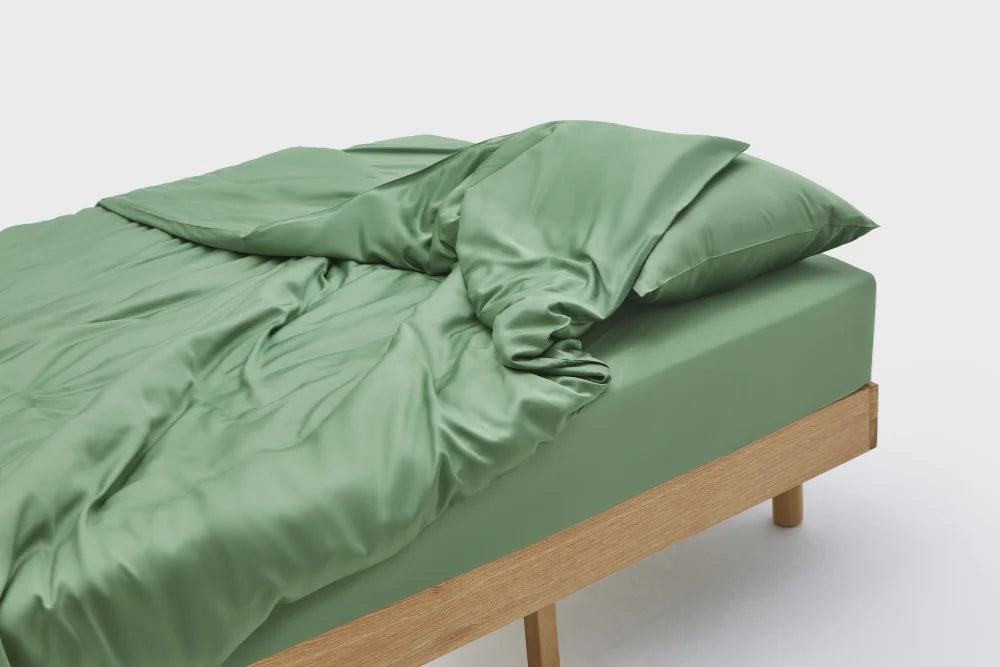Pilling occurs when fibers in the fabric break and tangle, leading to the formation of small balls or pills on the surface of the sheets. This can happen due to various reasons, including friction, low-quality materials, and improper care.
Understanding the causes of pilling is crucial in preventing it. Friction from regular use and washing is a primary cause, especially with low-quality fabrics. Additionally, using harsh detergents or washing at high temperatures can exacerbate pilling.
To prevent pilling, it's essential to focus on both material selection and proper care. Choosing long-fiber fabrics such as Egyptian cotton, high-quality polyester, or sheets made from
Lyocell sheets can greatly reduce the likelihood of pilling.
These materials are more durable and less prone to fiber breakage. Proper care involves gentle washing with mild detergents, avoiding fabric softeners that can weaken fibers, and using lower heat settings during drying.
Step 1: Choose the Right Sheets to Prevent Pilling
When it comes to preventing pilling on your sheets, the fabric choice plays a crucial role. Opting for sheets made from long-fiber fabrics is essential in reducing the likelihood of pilling. Long-fiber fabrics, such as Egyptian cotton and high-quality polyester, are known for their durability and resistance to fiber breakage. On the other hand, short-fibre fabrics are more prone to pilling due to their weaker structure.
Reading Labels: What to Look For
As you shop for new sheets, it's important to pay attention to the labels and understand what to look for in terms of preventing pilling. Two key factors to consider are the thread count and weave type. A higher thread count often indicates a smoother and more durable fabric, which can contribute to preventing pilling. Additionally, certain weave types, such as sateen or percale, offer excellent resistance to pilling.
Personal Experience with Different Fabrics
In my quest to find the best sheets that resist pilling, I've experimented with various fabrics and observed their performance over time. Through personal experience, I've found that Egyptian cotton sheets with a thread count of 400-600 provide exceptional comfort and durability while significantly reducing the occurrence of pilling.
Step 2: Proper Washing Techniques to Avoid Pilling
When it comes to preventing pilling on your sheets, proper washing techniques are essential for maintaining the fabric's integrity and minimizing fiber breakage. Here's a guide on how to wash your sheets effectively and avoid common washing mistakes.
How to Wash Your Sheets
To prevent pilling, it's crucial to start with the right detergent. Choose a mild, gentle detergent free from harsh chemicals and additives. Look for detergents specifically formulated for delicate fabrics, designed to clean without causing damage or weakening the fibers. When
washing your sheets, opt for a cold or lukewarm water temperature setting. Hot water can increase the likelihood of pilling by accelerating fiber breakdown, so it's best to avoid high temperatures.
Avoiding Common Washing Mistakes
One common mistake that can contribute to pilling is overloading the washer. When the washer is overloaded, friction between items can lead to excessive wear and tear on the fabric, increasing the risk of pilling. To prevent this, wash your sheets in smaller loads, allowing them ample space to move freely without rubbing against other items. Additionally, refrain from using fabric softeners when washing your sheets. While fabric softeners may impart a pleasant scent and softness to fabrics, they can also deposit residue that weakens fibers and contributes to pilling over time.
By following these proper washing techniques and avoiding common mistakes, you can significantly reduce pilling on your sheets while ensuring their longevity and quality.
Step 3: Drying Sheets the Right Way to Prevent Pilling
After washing your sheets, it's equally important to pay attention to the drying process to prevent pilling and maintain the fabric's integrity. The way you dry your sheets can significantly impact their longevity and resistance to pilling.
The Best Drying Practices
When it comes to drying your sheets, you have two primary options: tumble dry or air dry. Tumble drying involves using a machine dryer, while air drying allows the sheets to dry naturally in the open air.
Tumble Dry vs. Air Dry
Tumble drying provides a convenient and efficient way to dry your sheets quickly, especially during colder or rainy seasons when outdoor drying may not be feasible. However, excessive heat from tumble drying can contribute to fiber breakage and pilling.
On the other hand, air drying is a gentle method that minimizes friction and reduces the risk of pilling. It's particularly beneficial for delicate fabrics and can help maintain the smoothness of the sheets.
To further prevent pilling, it's essential to consider the heat settings when using a machine dryer. Opt for low or medium heat settings instead of high heat, as excessive heat can weaken fibers and lead to pilling over time.
Tips for Reducing Friction
In addition to choosing the right drying method, there are additional steps you can take to minimize friction and protect your sheets from pilling.
Separate Sheets from Other Laundry
When drying your sheets, avoid mixing them with heavier items such as towels or blankets. The rough texture of these items can cause friction against the sheets, leading to pilling. Instead, opt for separate loads dedicated solely to washing and drying your sheets.
Using Dryer Balls
Consider using dryer balls during the drying process. These nifty accessories help reduce static electricity, soften fabrics, and promote better airflow within the dryer.
By minimizing static cling and creating separation between items in the dryer, dryer balls can effectively reduce friction and prevent pilling on your sheets.
By following these best practices for drying your sheets and implementing tips to reduce friction, you can ensure that your sheets maintain their smoothness and resist pilling over time.
Step 4: Regular Maintenance to Keep Sheets Smooth
After taking steps to prevent pilling on your sheets, it's essential to maintain a regular care routine to ensure their longevity and smoothness. By incorporating weekly care tips and seasonal sheet care practices, you can effectively preserve the quality of your sheets and prevent pilling from occurring.
Weekly Care Tips
Gentle Brushing Techniques
One effective method to prevent pilling is through gentle brushing techniques. Using a soft-bristled brush, lightly brush over the surface of the sheets in circular motions. This helps remove any loose fibers or potential pilling formations, keeping the fabric smooth and free from blemishes.
Spot Cleaning Stains
In addition to brushing, addressing stains promptly can contribute to maintaining the overall integrity of your sheets. When dealing with spills or stains, opt for spot cleaning using a mild detergent and a soft cloth. Gently dab at the affected area without rubbing vigorously, as aggressive rubbing can lead to fiber breakage and eventual pilling.
Seasonal Sheet Care
Rotating and Storing Sheets
To prevent uneven wear and tear that can lead to pilling, consider rotating your sheets regularly. By alternating between different sets of sheets, you distribute usage more evenly, reducing the likelihood of pilling in specific areas. Additionally, when not in use, store your sheets in a cool, dry place away from direct sunlight and moisture. Proper storage helps maintain the fabric's strength and prevents premature aging that can result in pilling.
When to Use Special Treatments
At times, special treatments such as fabric conditioners or enzyme-based cleaners may be beneficial in preserving sheet quality. However, it's crucial to use these treatments sparingly and strictly according to manufacturer guidelines. Overuse of certain treatments can compromise fabric integrity and contribute to pilling rather than preventing it.
By incorporating these weekly care tips and seasonal sheet care practices into your routine, you can effectively maintain the smoothness of your sheets while minimizing the risk of pilling.
Step 5: When to Replace Your Sheets
Signs It's Time for New Sheets
Over time, sheets may show signs of wear and tear, indicating the need for replacement. One common indicator is persistent pilling, where small balls or pills continue to form on the fabric surface despite preventive measures. This can affect the overall comfort and aesthetics of the sheets, signaling the need for a fresh set.
Another telltale sign is the presence of thin spots and tears in the fabric. These weakened areas not only compromise the structural integrity of the sheets but also detract from their functionality. Thin spots can lead to discomfort during use, while tears can exacerbate and result in further damage.
Making the Oldest Sheets
When it's time to bid farewell to your old sheets, consider alternative ways to extend their utility before recycling them. Repurposing ideas such as using old sheets for cleaning rags, craft projects, or protective covers for furniture can provide a second life for these textiles. Additionally, donating gently used sheets to shelters or charitable organizations contributes to sustainable practices and supports those in need.
For environmentally-conscious individuals, exploring recycling options is a proactive approach toward responsible disposal. Many communities offer textile recycling programs that accept old sheets, ensuring they are repurposed into new materials or responsibly disposed of without contributing to landfill waste.
For some old sheets, you can also use them for your family pets. For example, puppies and kittens, love to
scratch the sheets.
Read more:











Dejar un comentario
Este sitio está protegido por hCaptcha y se aplican la Política de privacidad de hCaptcha y los Términos del servicio.